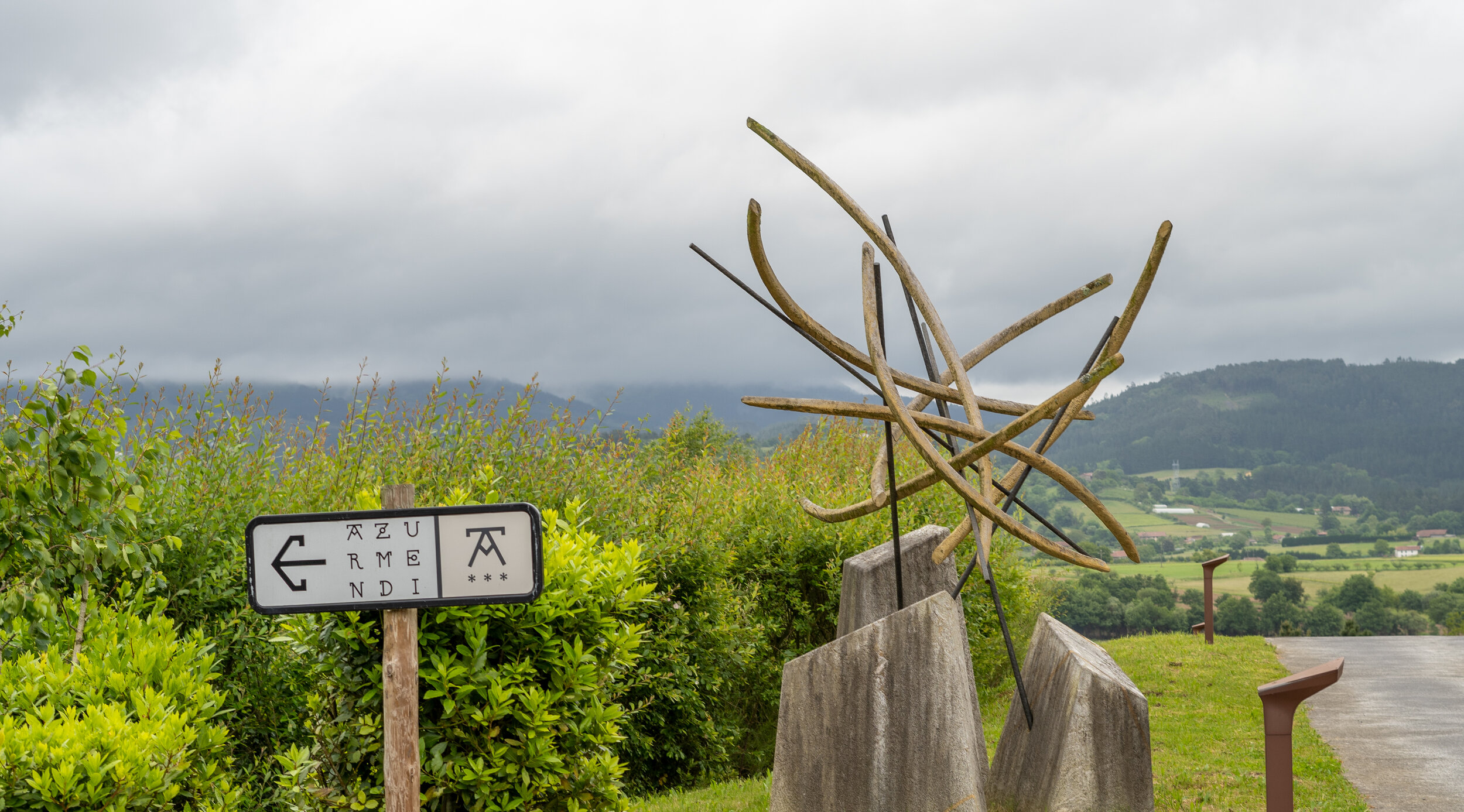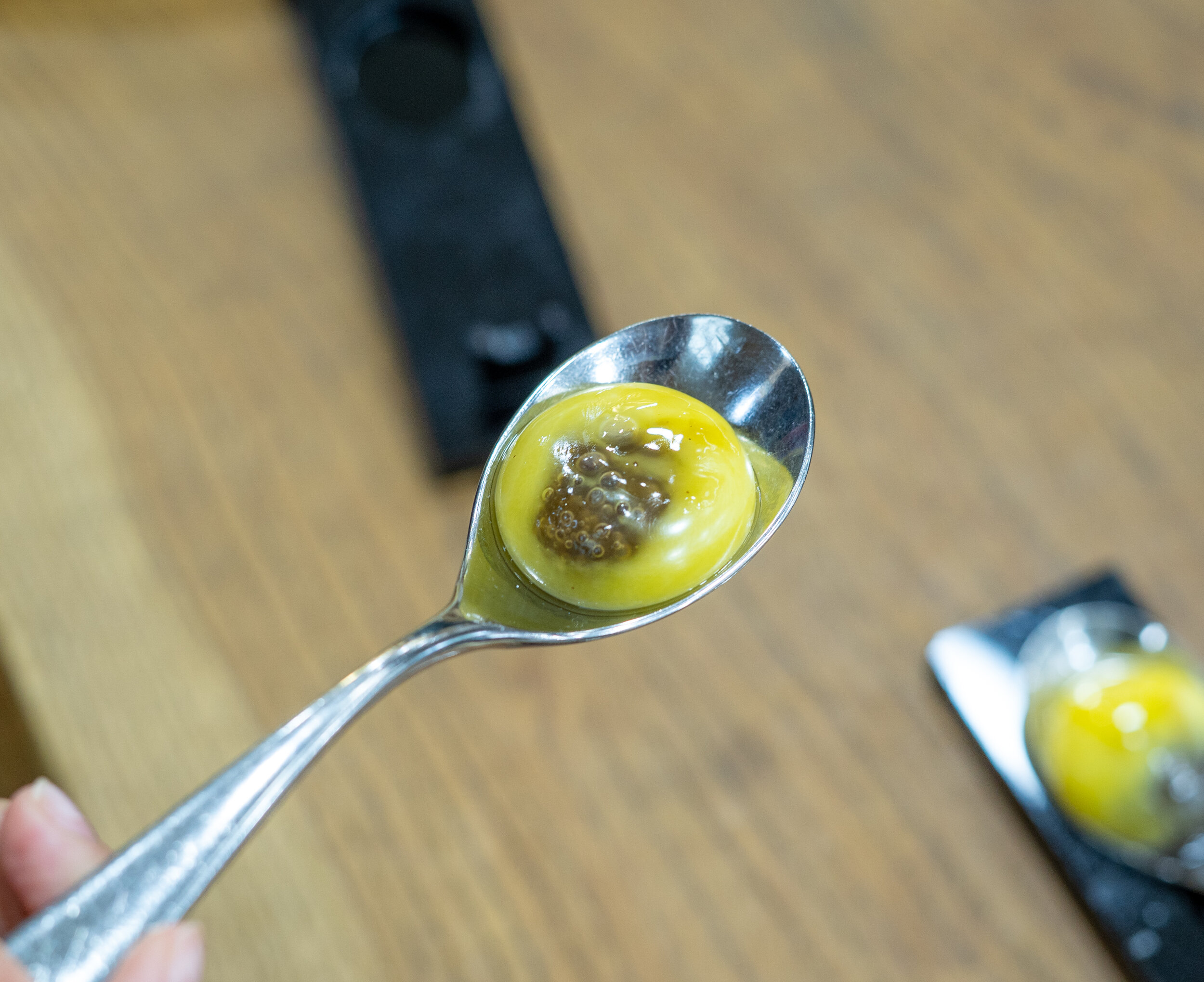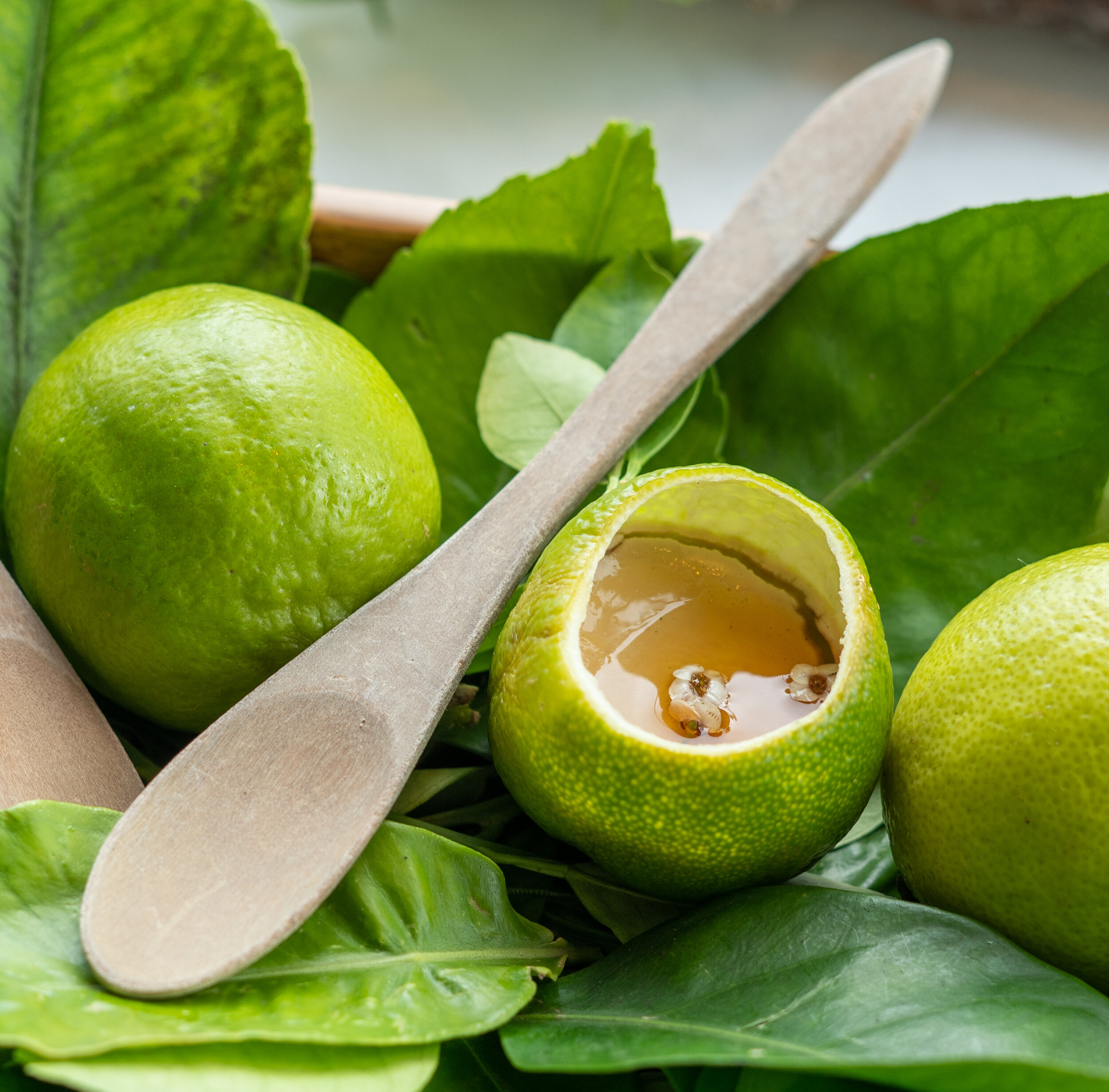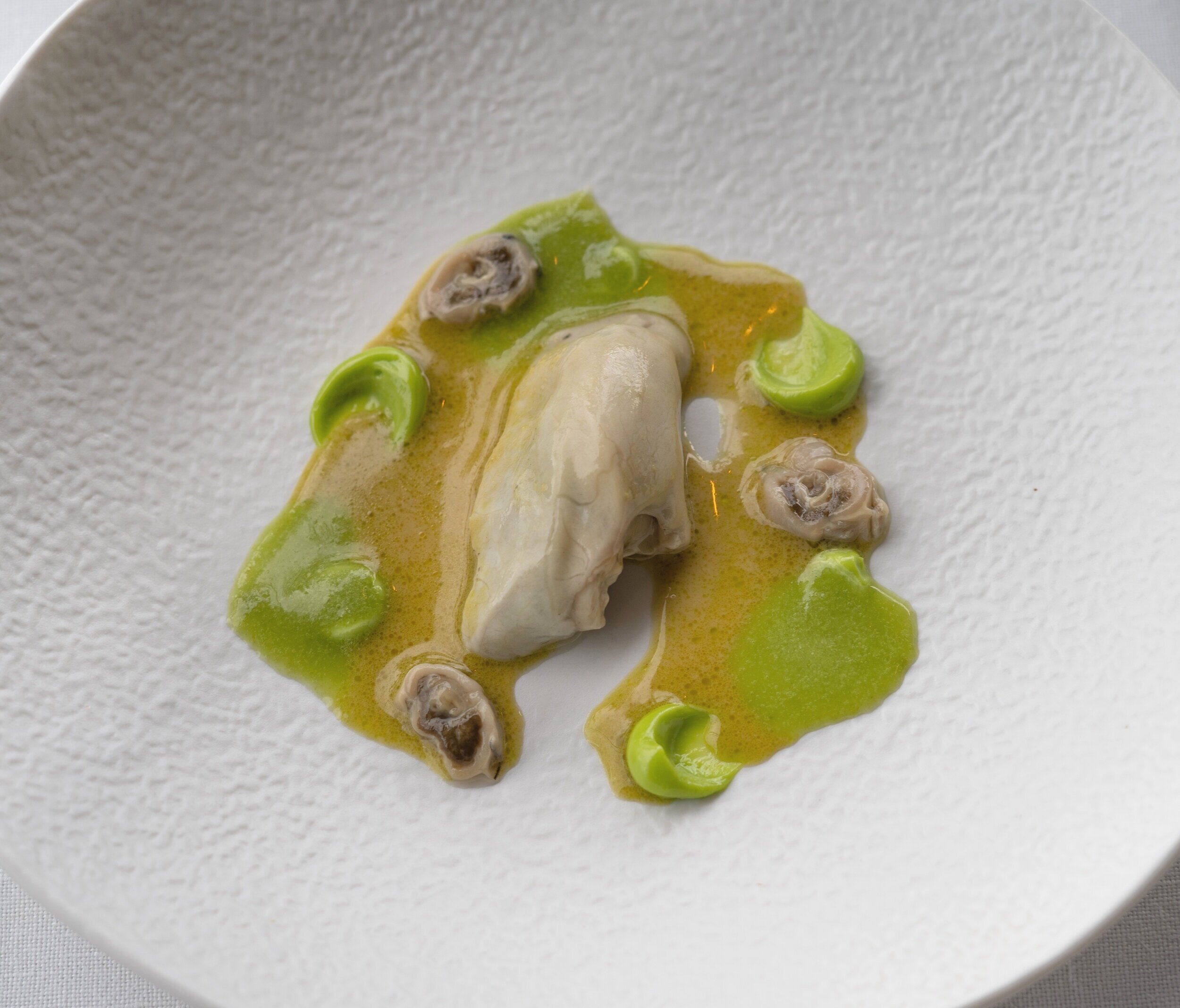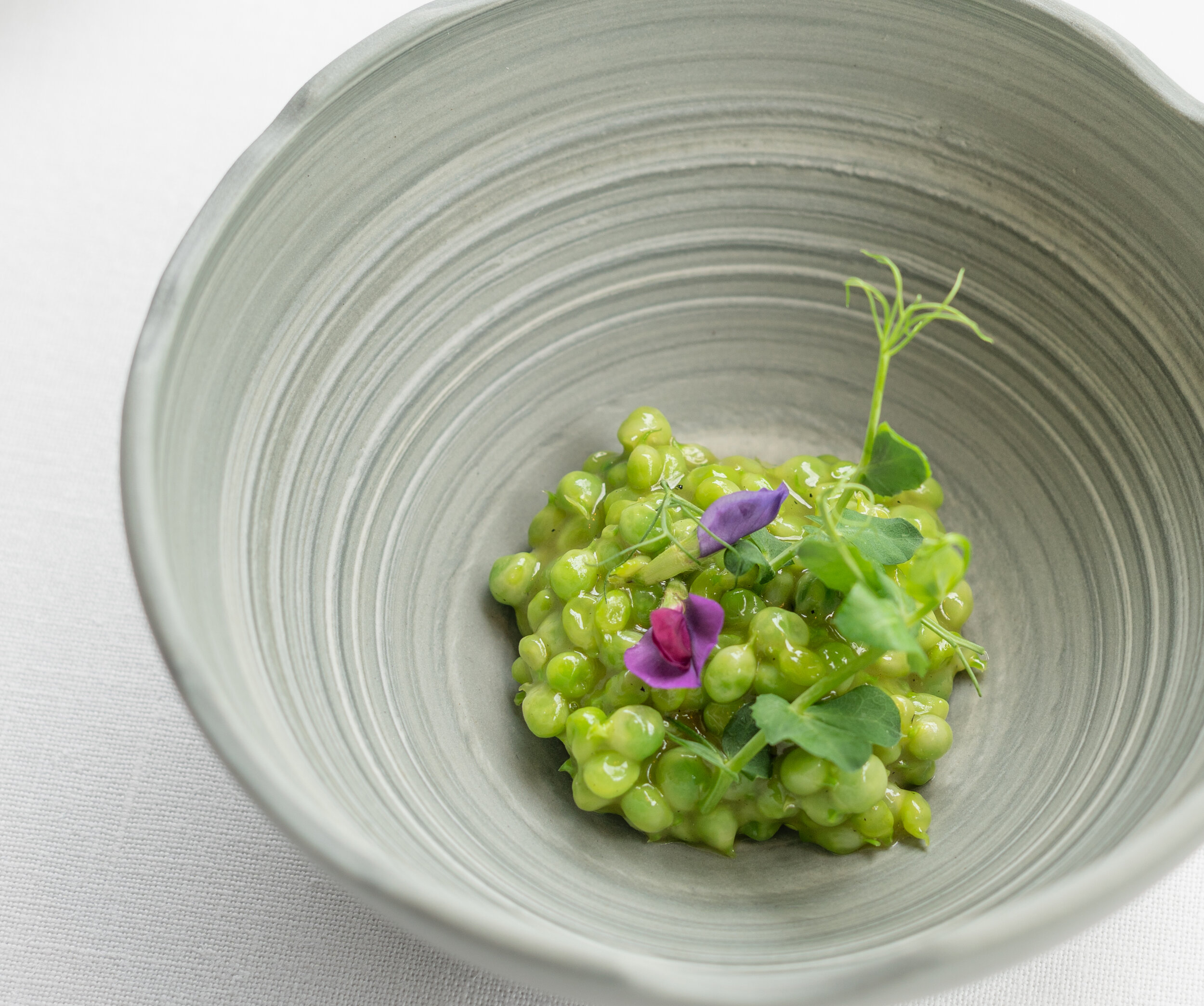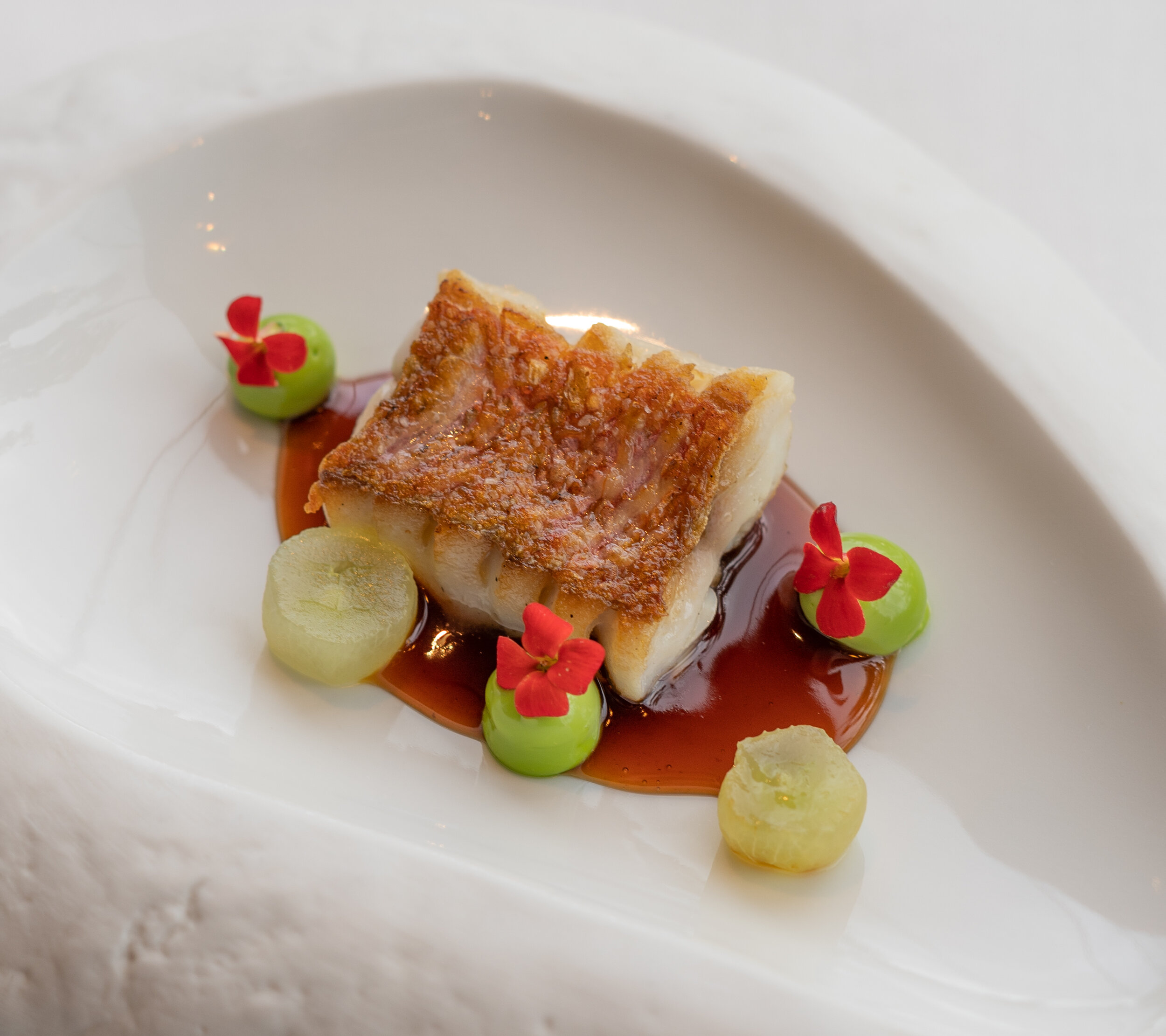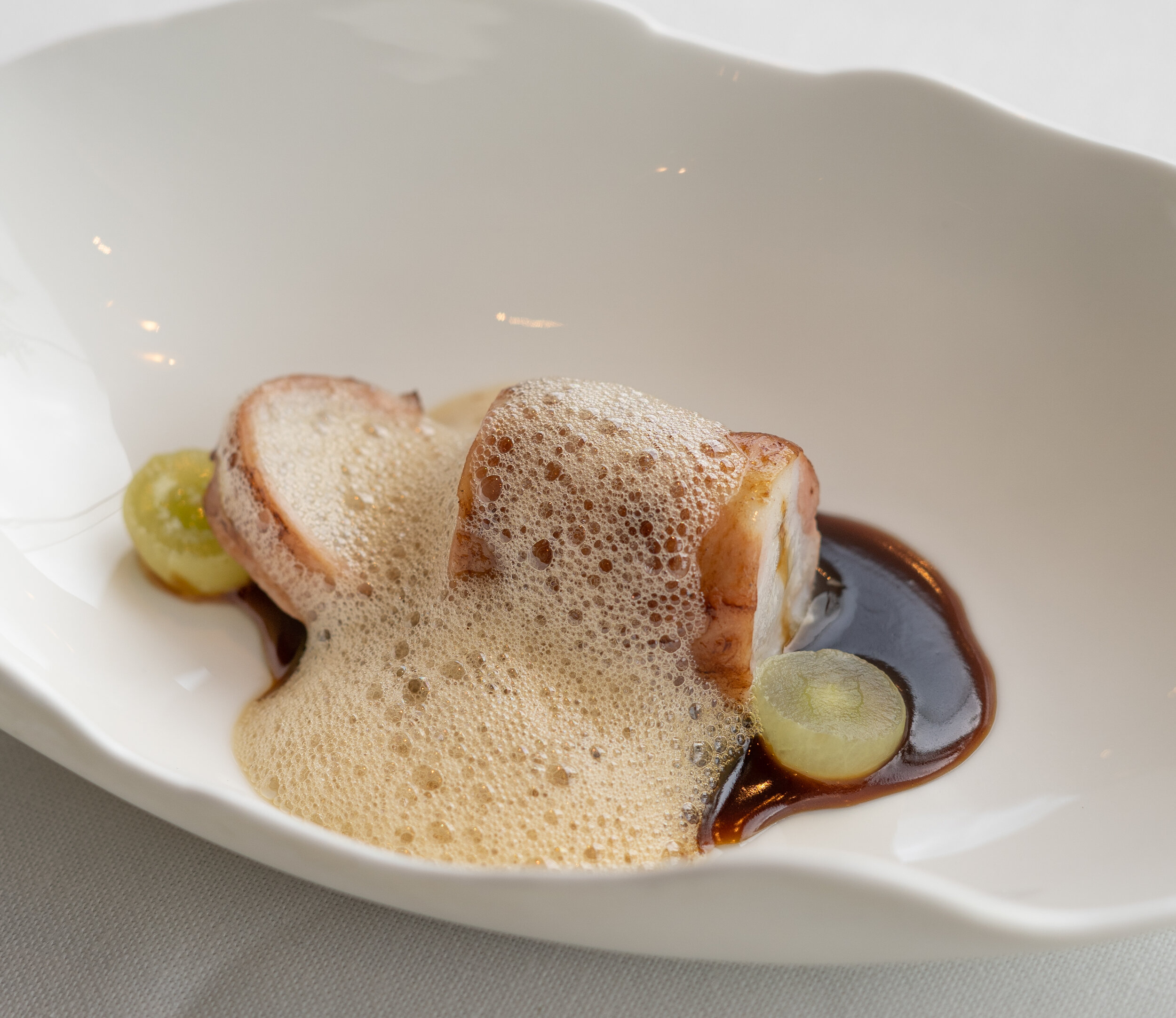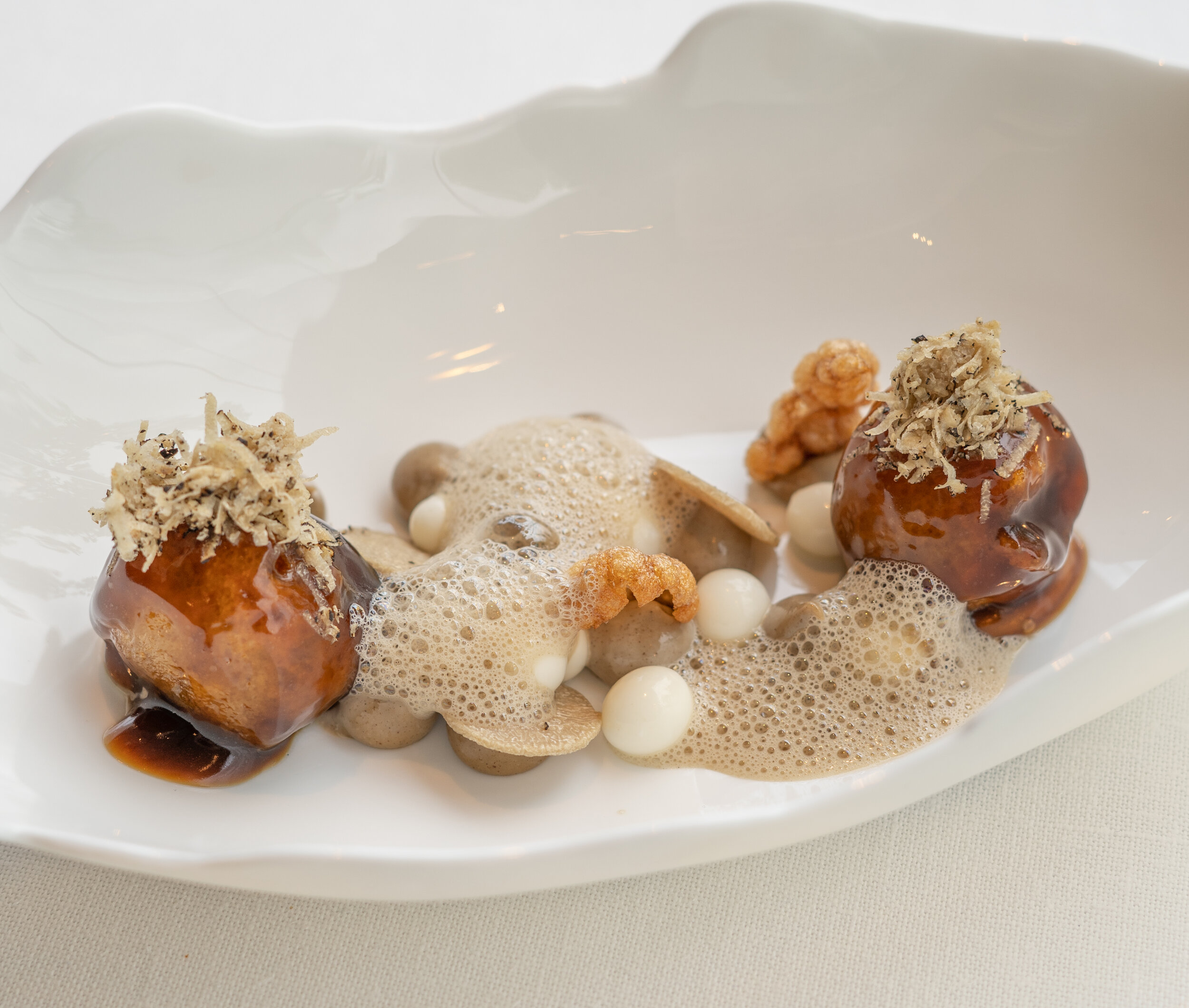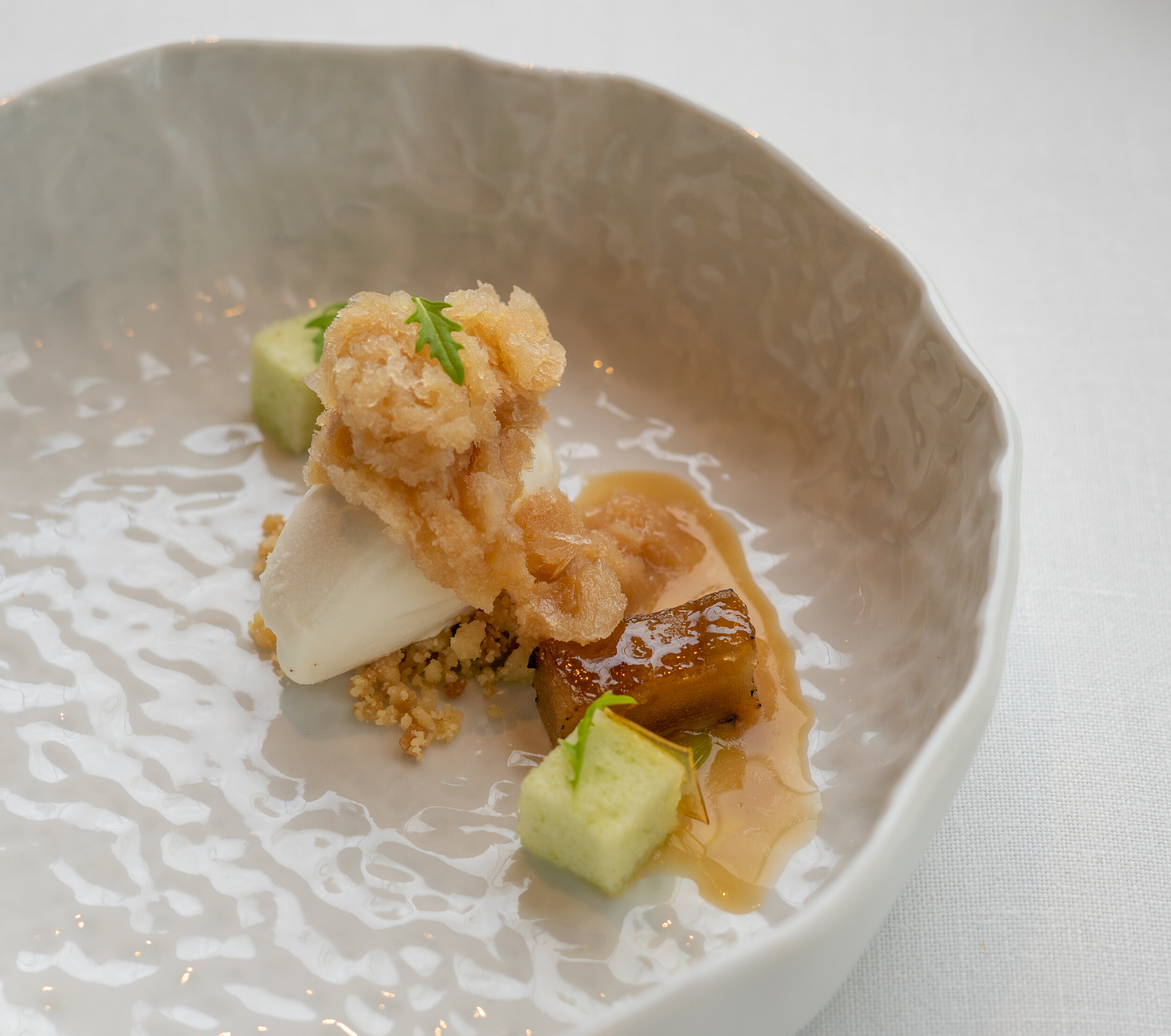Azurmendi
Azurmendi review at-a-glance
Awards: Three Michelin star, #14 Worlds 50 Best (2019)
+Multi-part dining experience that delights the palate and the mind
+A creative chef that continues to push his food forward despite being at the pinnacle of culinary achievements
+Kindly priced wine by the glass list
-None? It is hard to really think of a negative. I guess more luxury ingredients like truffles or caviar would have been nice?
Visited: May 2019
Review Rating: 100/100
Verdict: I could easily write paragraph after paragraph on why Azurmendi is great. The hard part is narrowing down why it is such a special restaurant to only a few short sentences. Was it the food? Was is it because Chef Eneko Atxa reimagines the typical restaurant experience, dividing it into different stages that take place across the entire building? Was it because they let us order different tasting menus and somehow managed to serve the 12+ different courses simultaneously? The answer to what makes Azurmendi special is all of the above. Azurmendi delivers a complete dining experience from start to finish. Three stars can sometimes be a drag on a chef’s creativity - if there is nowhere to go but down why take risks? Chef Atxa must not have gotten the memo that he has maintainted three stars since 2013 because he is still cooking with the creativity and drive of a chef with two stars, striving for three.
The San Sebastian area is known for its high number of Michelin restaurants relative to its population, many of which, such as Asador Etxebarri (#3 in 2019) and Murgatiz (#8 in 2019) rank very high on the Worlds 50 Best list. While Azurmendi does relatively well on the same list (#14, 2019), I find it does not have the same international name recognition as those restaurants or say, El Celler de Can Roca. It should.
Price I Paid: €220 for many course tasting menu
Value:18/20
Azurmendi and Chef Eneko Atxa Background
Azurmendi is located on a steep hillside in Larrabetzu, Spain which is around a 20-minute drive from Bilbao, but quite a bit further (~1 hour) if you are driving from San-Sebastian. This is a striking location for a restaurant, the very modern building perched overlooking the many surrounding trees and mountains. Azurmendi makes the most of this setting, having a working vineyard and rooftop garden in addition to the restaurant. Given its hillside location getting to the restaurant does involve a steep drive but that seems worth it given the views.
With its off-the-beaten-track location and building built from the ground up to fit the Chef’s vision, I was quite surprised to learn that Azurmendi was the chef’s first restaurant when he opened it in 2005 at the young age of 28. This must have involved quite a bit of financial risk so I have to commend his business partners (Gorka Izagirre and Saioa Goitia) for spotting his prodigious talent and making this restaurant a reality. This faith was quickly repaid as Azurmendi earned its first star within a year of opening and achieved its 3rd in 2013.
Chef Atxa had the best culinary training a chef could want in Spain, passing through the best kitchens in the Basque region including Martin Berasategui, Asador Etxebarri and Mugaritz as well traveling extensively to get inspiration from the best chefs around the world. He used all of these experiences to form his own very personal cooking style and draw inspiration for his restaurant.
As you will soon find when I go through the dishes, Azurmendi is a very unique restaurant in that the chef wanted to rethink the diner’s experience so it is not just limited to sitting at a table but also involves various areas. He accomplishes this very successfully by serving snacks in a variety of places including a picnic in the lobby (which even has a full-grown tree), snacks in the “garden”, and even a few courses in the open kitchen.
When I visited in May 2019 only a lengthy tasting menu was offered for €220. Since then, the menu has been raised to €250 which is still a good value given how impressive the restaurant is. While the accompanying wine pairing is not a particular bargain (€129) the wine program at Azurmendi is overall very well priced - there was no wine by the glass list but they charged us only ~€10 / glass for the few that we ordered. Bottles also had relatively modest mark-ups compared to a typical Michelin restaurant.
While there is no a la carte option, Azurmendi did offer two completely different tasting menus - one which focuses on the classics of the restaurant while the other showed off more seasonal dishes. While they recommended you select the same menu they were actually willing to let both my wife and I order different menus so we could try the full breadth of Chef Atxa’s cooking. This type of flexibility is almost unheard of at a Michelin restaurant and it is easy to see why - the difficulty is amped up when you need to execute and present different dishes at the same time. Despite the challenge, the kitchen pulled off the dual menus with aplomb and never had any technical or timing issues.
Review of what we ate at Azurmendi
Regardless of the menu you pick, the meal starts with a progression through different areas of the restaurant. The first section is in the restaurant atrium where you have a welcome picnic with a glass of cava. When I visited, the picnic basket included dry asparagus, smoked fish brioche, an Iberico tartar, and a hibiscus juice. This was a great way to start a meal, nice classy nibbles served in an atrium that even had a tree to complete the picnic experience. Perhaps the most shocking part of the meal was that the glass of cava was free and not added to the bill later. In the world of three Michelin star restaurants where they roll around the champagne trolly and then add €30 to the bill for a glass of bubbles, this was an appreciated gesture.
Next, the meal moves into the “greenhouse” where the next bites are hidden in various plants. First, you have spiced bread, a drink of fermented apple, a hot mussel infusion, and lastly a rose kaipiritxa. I liked how each of these snacks highlighted a flavor and ingredient although I enjoyed the picnic bites better.
The last “section” before moving into the dining room was in the restaurant’s modern kitchen where a few bites were served from the kitchen. From left to right a truffled egg, “corn tarlo” with chorizo, and a vermouth marianito. The truffled egg is one of Azurmendi’s signatures and is prepared right in front of you. A raw egg yolk starts on a spoon and the chef extracts some of the yolk with a syringe. The extracted yolk is then replaced with a warm truffle broth, cooking the raw yolk slightly. The end result is fantastic, the creamy consistency of the egg working in harmony with the truffle taste.
I can’t emphasize enough how enjoyable a way to start a meal this was. The staff was friendly throughout, really “selling” the experience and giving plenty of informative tidbits at the same time. My wife, who is not that into the long Michelin tasting menus, absolutely loved it as well. It made the meal feel like a fresh experience- part entertainment, part sustenance. After all of the fun, we moved into the dining room (called “The Balcony” in the menu) and what a dining room it was. Floor to ceilings windows with sweeping views and lots of natural light. Whoever designed this building deserves an award. For the main tasting menu, my wife ordered the “Erroak” menu while I got the “Adarrak” menu. Each menu consisted of roughly 14 course, almost all different, so we tried ALOT of dishes. The dishes between the menus often shared a main ingredient but showcased in different ways. To avoid having this review being longer than a Harry Potter book I will do the dishes two at a time.
Before starting the aforementioned menus, we were served even more amuses - a mushroom praline with beans, “limon grass”, and a sea txakoli. The favorite of the three was the limon grass which was really a foie based mousse that was topped with a lemon and vermouth jelly. This was nice and creamy and had good balance between the rich foie and jelly.
Finally after the many many amuses we were served the first course of each menu which featured different shellfish - one with shrimp that had been paired with vegetable juice and frozen old tomato, the other a nice plump oyster with olive oil. Two nicely presented dishes with nice clean, refreshing flavors to start the meal.
The next course showed off two different pristine ingredients, both prepared over hot coals - one dish was cauliflower on hot coals while the other was teardrop peas and egg on charcoals. The cauliflower dish took its main ingredient and prepared it multiple ways - roasted as a floret, pureed, and transformed into little caviar pearls. The roasted floret was particularly good, bringing that wonderful carmelized flavor you get from a piece of cauliflower that has been cooked just to the edge of burnt while also having a bit of smokiness from the coals. While the cauliflower was good, the other dish was transcendent. Teardrop peas, found mainly in the Basque countryside where Azurmendi is located, are nicknamed “green caviar”. This name comes from their appearance, mouthfeel, and high price ($350/lb). Eating these peas really does have a similar sensation as caviar, the small pearls bursting in your mouth but with a spring sweetness in lieu of the pronounced salinity you get in good caviar. A simple dish that let the natural beauty of the main ingredient lead the way.
The next course on both menus showed off some beautifully prepared lobster that had been roasted and peeled - one served with fine herbs, and the other with the coffee butter and purple onion from Zalta. In both dishes the lobster was cooked flawlessly, retaining all of its natural sweetness and avoiding the chewy texture you can get if it is even slightly overcooked. The pairing of the sweet lobster with the bitter coffee reminded me a bit of a langoustine and coffee dish at Lasarte. While both restaurants did the dish well, Azurmendi did it better.
The next courses focused on garlic. The classic dish was garlic mushrooms where Enoki mushrooms had been sauteed and rolled up like pasta before being served with a rich truffle cream sauce. Also included were some nicely fried tempura croquettes on each side which provided a nice textural contrast to the soft mushrooms. While the dish was a tad over seasoned, the mushroom flavor still came through wonderfully. The other dish was garlic soup (not pictured) which somehow included multiple large cloves of garlic without being too sharp or making your breath smell after.
Next up was a fish course for each menu - I had red mullet in two services - flame-roasted and grilled with red pepper juice and parsley. Red mullet is a tricky fish given its assertive flavor but the kitchen smartly paired it with other strong flavors. While it was just a bite of fish, I really liked the flame-roasted piece as the fish was still partly raw on the interior but the exterior had plenty of char and flavor of the flame. My wife had monkfish with Iberian crust, butter air, legume broth, and pickled grape which really highlighted the meaty texture of the monkfish.
The next course overlapped on both menus and paid homage to cod by serving it mouth to tail. This actually included two smaller dishes with a stew of tripe, special cut, skin, and “kokotxa”. This tasted good enough. Although I appreciated that the kitchen used the entire dish, it wasn’t in the same league as the mullet/monkfish or a more traditional French seafood course.
The meat course on my menu was a boneless roasted pigeon with vegetables and foie toast. I appreciated that this dish was more classical, featuring less modern techniques than other dishes, as it is nice to have something simple and straightforward in a meal with lots creative dishes. My wife had a dish of Iberian Pork “Castaneta” with Idiazabal cheese bonbon and mushroom. This has a lot of strong flavors - I enjoyed the bites I had but my wife found it a tad rich and heavy, especially this late in such a lengthy meal. Before we moved to dessert, there was an extra dish in my menu of stewed piglet tail and anchovies from Bermeo (not pictured). The kitchen did a nice job of making the piglet tail tender but it was covered with a thick glaze which was tasty but again quite heavy like my wife’s dish.
Dessert featured three different courses and had a very nice progression, working from more refreshing flavors to heavier tastes like coffee and chocolate. I had a dessert with different textures of avocado and mango while my wife had fresh honey with a “thousand flowers”. The mango and avocado was ok but the honey dish was the better of the two - honey ice cream served on top of honeycomb might sound like a lot of honey but the kitchen somehow balanced it out while highlighting some top quality honey and great floral notes from the flowers.
I really enjoyed the next dessert of yogurt, honey and five spices. Yogurt and honey are a standard combination but what set this apart was the inclusion of five-spice. While five spice is most commonly used in savory dishes, it includes cinnamon, star anise, and cloves which all can work in a sweet dish as well. An inspired choice by the kitchen team at Azurmendi. My wife’s dessert of apple with yogurt, rocket and Malus was a little less exciting but fine.
The last dessert courses were heavier but still excellent. My favorite of the two was the coffee with milk and caramel which was a bit like a deconstructed caramel macchiato. What made the dish work for me, besides the comforting flavors, was the singular greatness of the caramel ice cream - its smooth texture and sublime caramel flavor will be burned into my memory for a long time. The other dessert was an interesting combination of black olives with sheep milk and cocoa. Black olives might seem like an odd choice for dessert but they add a nice saltiness to the dish and livened up the familiar combination of chocolate and milk.
As you would expect for such an elaborate meal, petit fours were extensive and featured an assortment of chocolates and jellies. This was not quite the level of the assortments of Bareiss, El Celler de Can Roca or Frantzen but a good selection nonetheless. As a nice touch, they even baked me a small chocolate cake for my birthday. A good end to a spectacular meal.
